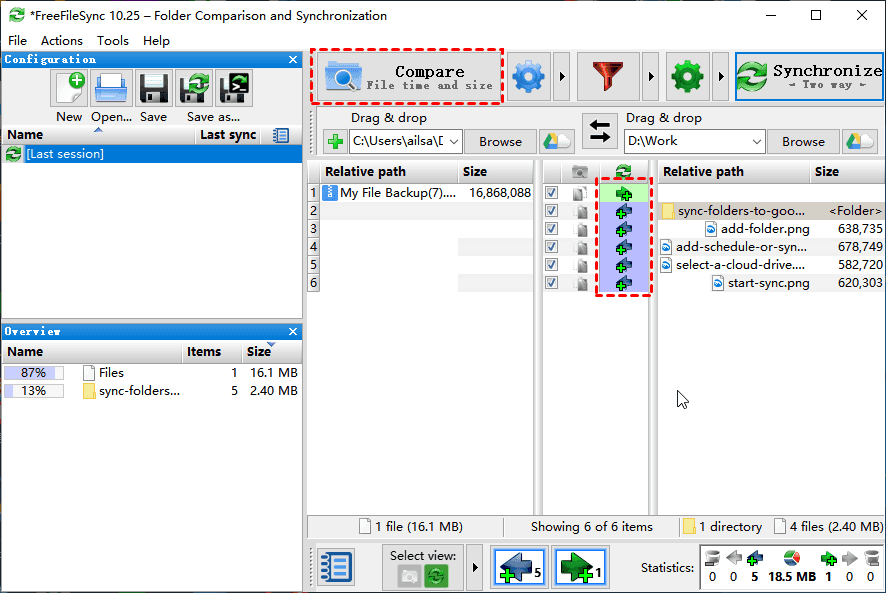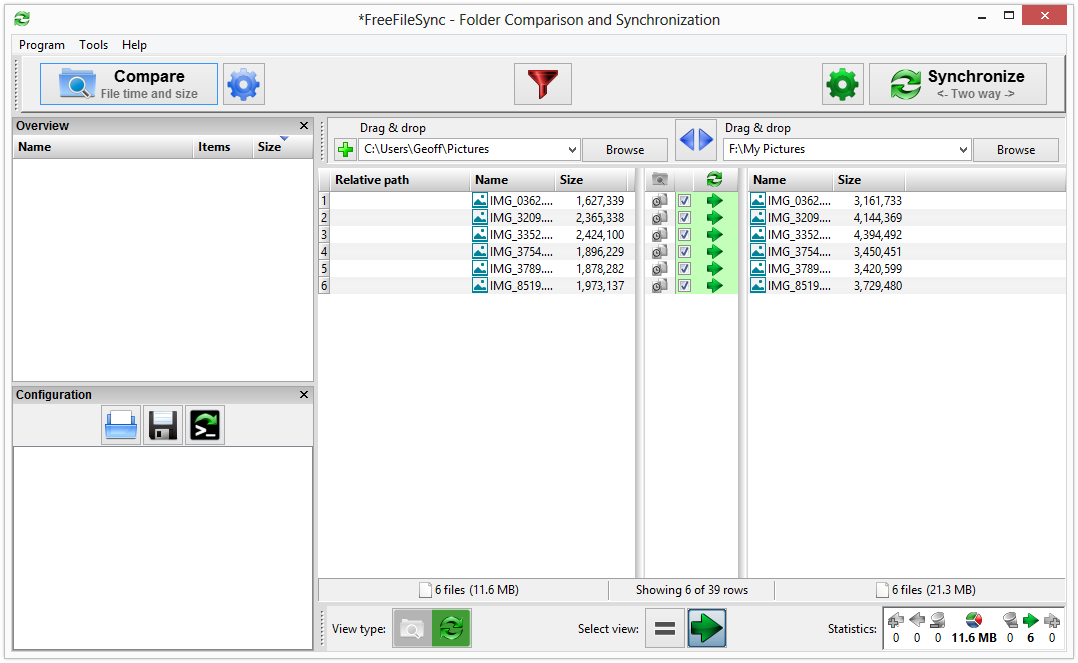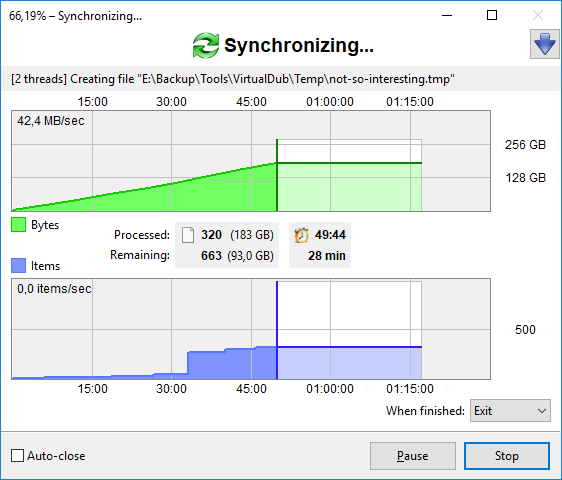

- #FREEFILESYNC SOURCE CODE HOW TO#
- #FREEFILESYNC SOURCE CODE INSTALL#
- #FREEFILESYNC SOURCE CODE ARCHIVE#
- #FREEFILESYNC SOURCE CODE CODE#
- #FREEFILESYNC SOURCE CODE FREE#
Run the synchronization job manually to ensure that it’s working correctly.Choose any synchronization options that you want to use (e.g., bidirectional synchronization, file exclusions, etc.).Specify the source and target folders that you want to synchronize.Open FreeFileSync and create a new synchronization job.
#FREEFILESYNC SOURCE CODE INSTALL#

Here are the steps to set up a synchronization job using FreeFileSync: In this example I am filtering our some of the xlsx and csv files in addition to other unwanted file types So that usernames and passwords can be excluded before making files available to others. When setting up to synchronize code, you can also pre-filter files that may contain authentication details. Once you’ve set up the job, you can run it manually, or you can set up a schedule to run it automatically at regular intervals. This involves specifying the source and target folders (i.e., the folders that you want to synchronize), as well as any synchronization options that you want to use. To use FreeFileSync in a DevOps workflow, you’ll need to first set up a synchronization job.
#FREEFILESYNC SOURCE CODE CODE#
#FREEFILESYNC SOURCE CODE ARCHIVE#
A back up location – where you want to archive files, or data.
#FREEFILESYNC SOURCE CODE HOW TO#
How to use FreeFileSyncin a DevOps workflow:įreeFileSync also allows the creation of multiple jobs, to synchronize the same source information to several locations. By using FreeFileSync, developers can share their code more easily and collaborate with a wider audience. This enables the broader organization to gain access to the code, which they may be able to leverage for their own applications. For example, a developer might use FreeFileSyncto synchronize specific projects to be shared on SharePoint via a OneDrive sync configuration, since GitLab is not accessible to everyone in their corporation. This is where FreeFileSync comes in – it makes it easy to synchronize files and folders across multiple machines, so that everyone has access to the latest version of the codebase.Įssentially, the same reason you might use GitHub or GitLab applies to how a developer might use FreeFileSync. When changes are made to the codebase, it’s important to ensure that those changes are propagated to all other copies of the codebase, so that everyone is working with the latest version. Each member may have their own copy of the codebase on their local machine, and they may also have access to a shared repository or server.

In a typical DevOps workflow, multiple team members are working on the same codebase or project. Why use FreeFileSyncin a DevOps workflow? I set this to a folder to include the date and therefore maintain a copy of the older versions of the file in some destinations. It’s conflict management (version control) is also excellent – if the file already exists in the destination a duplicate of the original file will be stored within a folder of your choosing. The tool also supports a wide range of file types, including text files, images, videos, and more. With FreeFileSync, you can choose to synchronize files bidirectionally or unidirectionally, and you can also specify which files or folders to exclude from the synchronization process. It’s available for Windows, macOS, and Linux, and it supports a wide range of synchronization options.
#FREEFILESYNC SOURCE CODE FREE#
(Our corporate git-hub only allows specific developers to access repositories)įreeFileSyncis a free and open source tool that allows you to synchronize files and folders between two or more locations. In this article, we’ll explore how I use FreeFileSync in a DevOps workflow to improve collaboration and help with version control (complements Git-Hub). This is where FreeFileSync comes in – it’s a free and open source tool that makes it easy to keep files in sync across multiple machines. One of the areas where automation can be particularly beneficial is in the synchronization of files across multiple systems.

In the world of DevOps, automation is key.


 0 kommentar(er)
0 kommentar(er)
